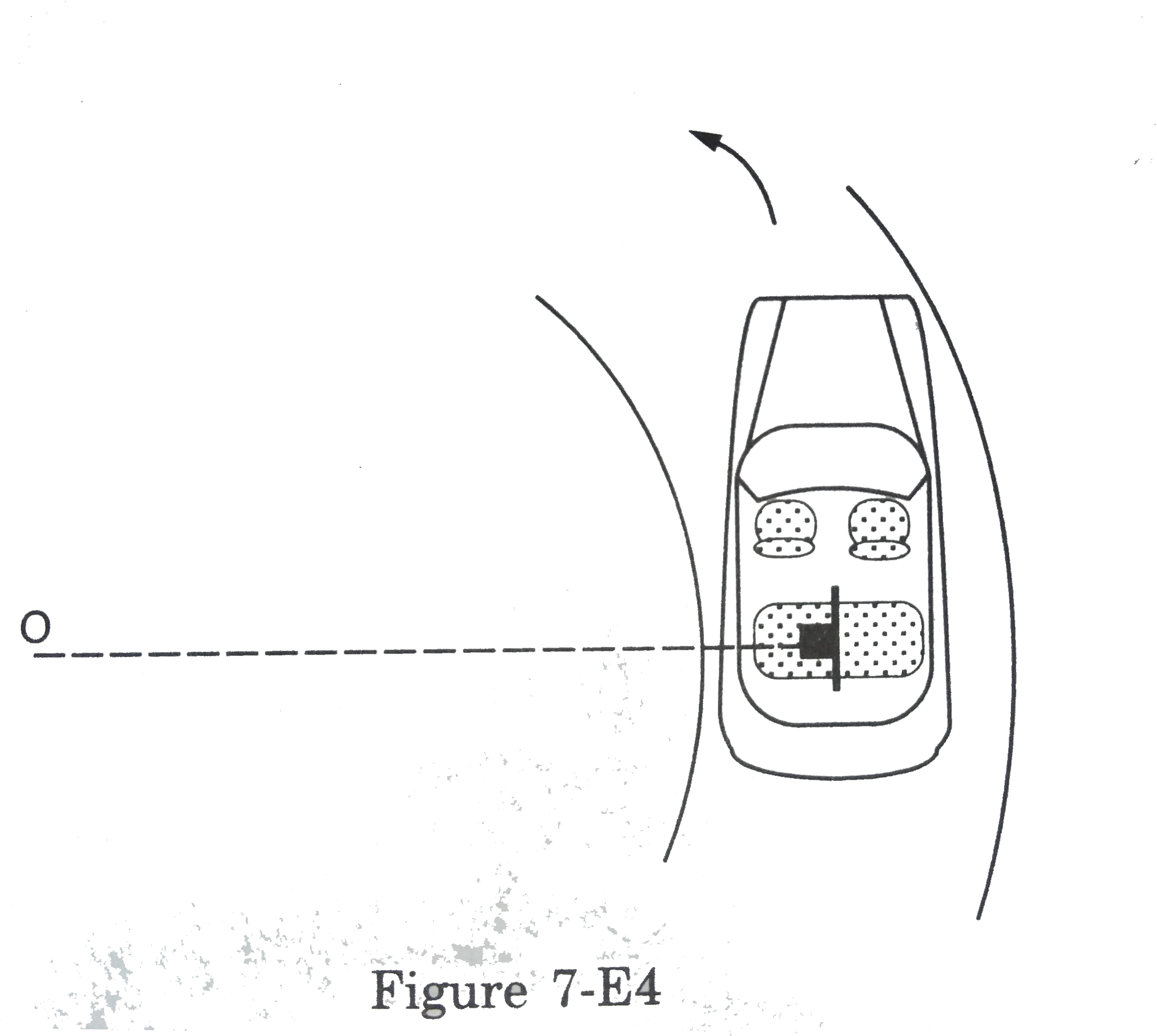A car moving at a speed of 36 km/h is taking a turn on a circular road of radius 50 m. A small wooden plate is kept on the seat with its plane perpendicular to the radius of the circular road figure. A small bock of mass 100 g is kept on the seat which rests against the plate. The friction coefficient between the block and the plate is μ=0.58. a. Find the normal contact force exerted by the plate on the block. b. The plate is slowly turned so that the angle between the normal to the plate and the radius of the road slowly increases Find the angle at which the block will just start sliding on the plate.

The correct Answer is:A, B, C
v=velocityofcar
=36kmhr=10msec
r=radiusof∘a––rpath=50m
μ= mass of small body <br>=100 gj=0.1 kg <br>u=friction coefficient between plant & body
=0.58
a. The normal contact force exerted by the plant on the block
N=mv2r
=0.1×10050=15=0.2N
b. The plate is turned so the angle betwen the normal tothe plate and teh radius of the rod slolwly increases
N=mv2rcosθ .........i
μN=mv2rsinθ ........ii
putting value of N from i ltbr> μmv2rcosθ=mv2rsinθ
rarr mu=tantheta<br>rarr theta=tan^-1(0.58)=30^0
Topper's Solved these Questions
- CIRCULAR MOTIONBOOK - HC VERMACHAPTER - CIRCULAR MOTIONEXERCISE - Objective 2
7 Videos
- CENTRE OF MASS, LINEAR MOMENTUM, COLLISIONBOOK - HC VERMACHAPTER - CENTRE OF MASS, LINEAR MOMENTUM, COLLISIONEXERCISE - Exercises
64 Videos
- FLUID MECHANICSBOOK - HC VERMACHAPTER - FLUID MECHANICSEXERCISE - Exercises
35 Videos
Similar Questions
A car goes on a horizontal circular road of radius R. The speed of car is increasing at constant rate a m/s2. If the friction coefficient between the road and the tyre is μ, then the limiting speed of car is
View SolutionA car starts from rest in a circular flat road of radius R with an acceleration a. The friction coefficient between the road and the tyred is μ Find the distance car will travel before is start skidding.
View Solution
Knowledge Check
A car is moving at a speed of 60km/h traversing a circular road track of radius 60,m. The minumum coefficient of friction to prevent the skidding of the car is (g=10m/s2)
A25/54B21/54C15/44D21/44A circular road of radius r is banked for a speed v=40 km/hr. A car of mass m attempts to go on the circular road. The friction coefficient between the tire and the road is negligible.
Athe car cannot make a turn without skidding.BIf the car turns at a speed less than 40 km/hr, it will slip downCIf the car turns at the correct speed of 40 km/hr, the force by the road on the car is equal to mv2rDIf the car turns at the correct speed of 40 km/hr, the force by the road on the car is greater than mg as well as greater than mv2rA car is taking turn on a circular path of radius R. If the coefficient of friction between the tyres and road is μ, the maximum velocity for no slipping is
AμRgB2μRgC(μRg)1/2D(2μRg)1/2
A smooth circular rod of radius r is banked for a speed v=40km/hr. A car of mass m attempts to go on the circular road. The friction coefficient between the type and the road is negligible, The correct statements are :
View SolutionA 100kg car is moving with a maximum velocity of 9m/s across a circular track of radius 30 m . The maximum force of friction between the road and the car is
View SolutionA car is moving with speed v and is taking a turn on a circular road of radius 10 m. The angle of banking is 37∘. The driver wants that car does not slip on the road. The coefficient of friction is 0.4(g=10m/sec2)
The speed of car for which no frictional force is produced is :
View SolutionA car of mass m is moving on a level circular track of radius R. If μs represents the static friction between the road and tyres of the car, the maximum speed of the car in circular motion is given by
View SolutionA car is travelling at 20 m/s on a circular road of radius 100 m. It is increasing its speed at the rate of 3 m/s2. Its acceleration is
View Solution
